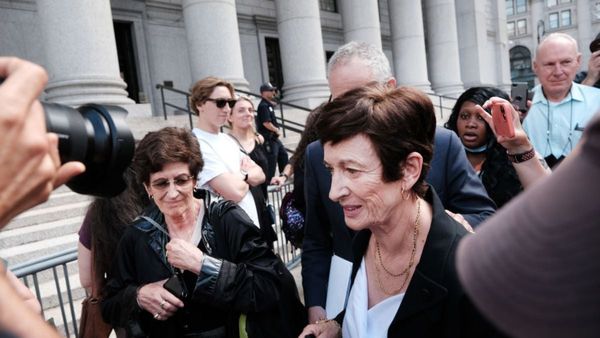
For fans of electronic dance music, the church of Our Lady of Fatima in Harlow, Essex, may have a certain familiarity.
The modernist building, constructed from brick and reinforced concrete with a tall needle spire piercing the sky, graced the cover of the Chemical Brothers’ 1998 album, Brothers Gonna Work It Out.
Now it has been given Grade II* listing by the government on the advice of Historic England to protect its historic and architectural significance.

Its appearance on the cover of the dance music duo’s album was not a factor in upgrading the church’s protected status.
Rather its innovative, “in-the-round” design, with a freestanding altar in the middle of its 500 seats visible to all in the congregation, plus its vibrantly coloured glass windows bathing the church in glorious light were key.
“The effect of walking into the church is uplifting, the feeling of entering a shifting kaleidoscope of colour … must surely have made many a new town worshipper gasp in astonishment,” said Clare Price of the C20 Society.

Since the Roman Catholic church was completed in 1960, its “stunning jewel-like” interior had “lost nothing of its impact”, she added.
It was designed by Gerard Goalen, a British architect who specialised in church buildings. Our Lady of Fatima was his first ecclesiastical commission; four of his churches are now listed.
His brief was for a church capable of holding 500 people. It was informed by the Liturgical Movement, which encouraged the active participation of the congregation in worship.
Five years after Goalen delivered his design, the church was built in Harlow town centre.
The dalle de verre window panels cover about 60% of the wall surfaces. They were created by a Benedictine monk, Dom Charles Norris of Buckfast Abbey, who was one of the most influential glass artists of the 20th century.
Dalle de verre is made from thick chunks of glass, which makes the colours more intense than traditional stained glass when light shines through them. The technique was developed in France in the 1930s.
The windows at Our Lady of Fatima depict the Joyful Mysteries of the Rosary along with the Tree of Jesse and the Apparitions of the Blessed Virgin Mary at Fatima in 1917.
Duncan Wilson, chief executive of Historic England, said: “This stunning church was created as part of the new town of Harlow, offering a brighter and better future in the postwar years, and has been at the heart of the community ever since.

“With its modern style, striking spire and glorious glass panels, it has proved an inspiration in contemporary church design and is loved by people who take comfort in its calming, beautiful presence every day.”
Alan Williams, the bishop of Brentwood, said the Harlow church was “one of the first of its kind and unique for its stained glass”.
In 1989, Tom Rowlands and Ed Simons, two history students at the University of Manchester, formed the Chemical Brothers – originally called the Dust Brothers.
They have had six No 1 albums and 12 Top 20 singles, and have won six Grammys. In 2000, their Pyramid stage set attracted one of Glastonbury’s biggest crowds. “I can’t remember a huge amount about it,” Simons told the Guardian earlier this year. “But I remember the roar of the crowd. It was wild.”
Now in their early 50s, Rowlands and Simons are releasing a new album in September, and are DJing in Ibiza in October.







